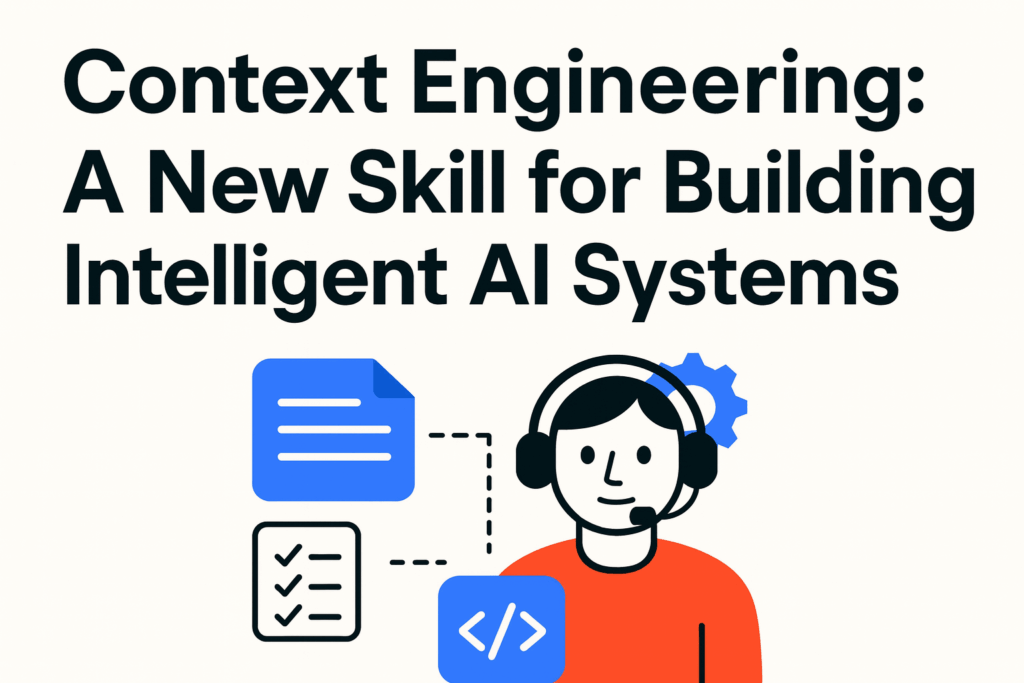In the world of artificial intelligence, prompt engineering was the star of the first act. However, as we transition from simple chat interactions to complex AI applications such as agents and specialized assistants, context engineering takes the stage.
But what exactly is context engineering, and why is it becoming essential in AI development?
📌 What is Context Engineering?
Context engineering involves designing and structuring the input (context) sent to large language models (LLMs), enabling them to perform tasks accurately, reliably, and efficiently. Instead of just writing a simple prompt like “Summarize this”, we build a structured system of instructions, data, and rules—delivered in the right format, at the right time.
This is the fundamental difference between:
- Prompt engineering: a single, often improvised text input.
- Context engineering: systematic preparation of context, roles, rules, memory, and tools that the AI relies on.
🤖 When is it important?
If you’re building AI assistants, agents, or tools that handle complex tasks (e.g., customer support, sales assistants, legal advisors, therapeutic bots), context becomes critical. There’s no room for improvisation—an agent must function autonomously.
🧠 Six Key Components of an AI Agent
- Model – The LLM powering the agent (e.g., GPT-4, Claude, Mistral).
- Tools – Interfaces to the external world (calendars, databases, APIs).
- Knowledge & Memory – Contextual databases and the recall of past interactions.
- Voice & Audio – Speech interfaces for a natural user experience.
- Guardrails – Mechanisms ensuring safe and reliable behavior.
- Orchestration – Managing workflows, monitoring performance, and continuous improvement.
🛠️ The Role of a Context Engineer
Imagine you have all the components of an AI agent, but no instruction manual. The context engineer writes that manual. They design the system prompt that connects everything:
- Which tool to use and when,
- How to process user queries,
- How to leverage memory,
- What priorities and constraints exist.
Without a well-designed context, even the most advanced model won’t know how to operate effectively.
📋 Example: Research AI Agent
Here’s a simplified prompt for an agent tracking AI trends:
- Role: Research assistant
- Task: Break down user queries into sub-tasks, collect data from multiple sources, rank by relevance, format in JSON, summarize in 300 words.
- Structure: XML tags with defined fields (source, domain, importance, timeframe).
- Constraints: No personal opinions, no background stories—only new, relevant data.
This is a simple yet powerful example of context engineering in practice.
📚 Further Learning Resources
Two key resources to explore:
- Cognition AI – Principles for multi-agent systems: “always share context” and “every action carries a decision”.
- LangChain Guide – Techniques such as writing, selecting, compressing, and isolating context.
Context engineering is not just “the next phase of prompt engineering”—it’s a new discipline that separates toy experiments from serious AI systems.
If you want to build agents that solve real business challenges, you must master the art of managing context—precisely, systematically, and creatively.


